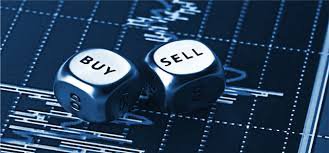Stock Markets still in a bullish mood

After the collapse seen in march 2020, stocks jumped in a massive rally from April 2021. The main trend has not changed yed and stock market started 2021 with favorable trends.
Vaccines should thwart the spread of Covid-19. S&P 500 earnings are expected to rebound after a difficult 2020. Morevoer, the Federal Reserve assured markets that it won't raise interest rates. Investors are expecting the new President Joe Biden to create new measures to help economic recovery.
But the stock market, has probably already priced a stronger economy and the end of the lockdowns generated by the coronavirus pandemic. That raises the risk that any disappointment in the recovery will investors. We should not forget that the S&P 500 rallied more than 65% from its March 2020 lows.
The Nasdaq did even better and achieved double-digit gains for a second straight year. DataTrek Research finds that the 14 other times that's happened since 1972, the index climbed in double digits at least one more year four times.
"The upshot: History shows it's possible for the Nasdaq to register a third year of double-digit returns given its broad exposure to tech, which is highly levered to innovation," said DataTrek co-founder Nicholas Colas. "But it's tough to surprise markets three years in a row."
But how does the market handle itself after really big years? The Nasdaq has four years of gains greater than 40% since its 1972 debut, according to Investor's Business Daily research. The best year after such a surge was the 16.9% advance in 2010, when the market was still recovering from the 2008 bear market.
The worst performance after a 40%-plus gain? A 39.3% swoon in 2000, the first year of the dot-bomb bear.
Stock Market Forecast 2021: Investor Optimism
It's hard to quantify the risk of high expectations, but a bubbly market is showing up in multiple sentiment gauges. The put-call volume ratio has been below 0.6 nearly every day since Nov. 20, the longest stretch in at least eight years. This contrarian indicator has often flagged at least minor market declines when the ratio got below 0.6.
The Investors Intelligence survey of market newsletters in late December showed a bull-bear spread "well in the danger zone," according to the research firm. A spread of 48% in early December was the widest since January 2018, just before the market tumbled into a whipsawing correction. Investors Intelligence advises investors to take defensive measures when the spread rises above 40%.
For a while, speculative froth appeared in only pockets of the market, mainly in single-stock options that became favorites of a new class of freshmen traders. But lately frothy speculation has become more widespread as other sentiment indicators show overconfidence, says Liz Ann Sonders, the chief investment strategist at Charles Schwab.
For example, the Ned Davis Research Crowd Sentiment Poll in mid-December was at its highest level since the February market peak. The 12-month average of net foreign purchases of U.S. stocks also worries Sonders. It hit a record high a few months ago, topping the peaks in 2000, 2007 and 2010.
Market breadth has been improving, which Sonders believes can help offset the froth. Still, she calls sentiment the largest risk for the stock market forecast for 2021. (Investors can find the advance-decline line, which tracks market breadth, every day at Investor's Business Daily in the General Market Indicators charts.)
2020 Stock Market: what should we learn
Market downturns aren't much of a problem if investors shift with the market. If the 2020 stock market taught investors anything, it's the importance of staying in tune with the main indexes. In February, the Nasdaq and S&P 500 were at record highs and the economy was practically at full employment.
The February peak came swiftly and with practically no chart signals. Distribution, or selling by institutional investors, wasn't heavy. But on Feb. 24, the Dow Jones Industrial Average plummeted more than 1,000 points. Apple stock gapped below its 50-day moving average, days after the company warned that coronavirus problems would cause it to miss sales targets. With a break in the indexes and some leading stocks, the rout was on.
IBD's stock market outlook went to "uptrend under pressure" that day. The next day, it was lowered to "market in correction," advising investors to immediately move to cash.
On April 4, the S&P 500 made a follow-through that confirmed a rally attempt. The Nasdaq had lost nearly 1,500 points since Feb. 25, but the signal turned out to be correct.
The stock market rebound was astonishing. The Nasdaq recouped all its losses in record time and added more than 30% from its February peak. It ends 2020 with one of the five best years in its history.
The main indexes' rebound ended in early September. On Sept. 8, IBD's outlook again turned cautious as the market went through a few uncertain weeks. The Dow made a follow-through on Sept. 30 that marked a lasting floor for the market, except for a late-October slide. The S&P 500 made another follow-through on Nov. 4, sparking the year-end rally.
What will happen in 2021 on stock markets?
It is not a mistery that investors are betting on a shift in market leadership.Cyclical and value stocks are widely forecast to outperform as the economy thaws out from coronavirus restrictions.
Since Nov. 9, when Pfizer (PFE) and BioNTech (BNTX) said their Covid-19 vaccine was more than 90% effective, the iShares Russell 1000 Value ETF has been outperforming the S&P 500.
"To a degree, it follows the conventional playbook in a not-so-conventional time," said State Street Global Advisors' ETF market outlook. "If growth is expected to broadly improve from a more open economy as a result of a vaccine and the ability to test (for coronavirus infection) at home, then, all else being equal, investors should likely seek out the cheaper source of growth."
Matthew Bartolini, one of the authors of the State Street forecast, told IBD that the rotation to value and cyclicals shows up in index performance and ETF fund flows. By the second week in December, there had been five straight weeks in which S&P value beat S&P growth. That was the longest stretch in two years.
Preliminary December data showed value ETFs took in $3 billion while growth ETFs lost $646 million. That came after November saw the largest spread in value and growth ETF flows in history, as value ETFs took in $9 billion.
But that doesn't necessarily mean the winners of the coronavirus stock market are fading. The online retail industry group has slumped since September. But cloud software, home furnishings, trucking and other industry groups that flourished when Americans started keeping a six-foot distance are trading near highs today.
Take for instance five stocks that symbolized the pandemic trade: Zoom Video (ZM), Teladoc (TDOC), Shopify (SHOP), Chegg (CHGG) and Peloton (PTON). All tumbled on the vaccine news, but all except Zoom are recovering or at new highs. Chegg broke out of a cup base on Dec. 21.
Sectors expected to rise with an ebb in coronavirus cases include consumer discretionary, particularly travel, restaurants and retail, says Sean Naughton, senior manager of U.S. equities at RBC Wealth Management.
Banks enter 2021 well capitalized from regulations dating back to the 2008 financial crisis, and should benefit from an improving economy and rising interest rates. Financials, Naughton adds, should participate in a cyclical recovery with accelerating earnings growth.
Of course, sector expectations rest on getting Covid-19 under control. If vaccines don't prove effective, "a lot of these (forecasts) will be taken off the table," Naughton said.
Stock Market Forecast 2021: The Small-Cap Rally
One of the strongest stock classes going into 2021 is small-cap stocks. The Russell 2000 soared 18.3% in November and climbed more than 8% in December.
Another asset class that tends to outperform in cyclical recoveries, small caps support the case for economic expansion in 2021, and many analysts are bullish on them.
"We see further upside in cyclical stocks such as global small caps, which tend to lead in recoveries and expansions, but which have lagged the recovery in leading economic indicators and remain attractively valued," UBS advised investors on Dec. 18. Global small-cap stocks trade at a 35% price-to-book-value discount relative to large caps compared with a historical average of 18%.
November was the Russell 2000's single best month ever, and the outperformance of small-cap stocks vs. large caps in the past three months is the highest since early 2000, says Schwab's Sonders. Investors will remember that early 2000 was a major market top, but Sonders notes that such extreme turns in performance between small and large caps often lead to sustained momentum.
Small-cap stock fundamentals are improving. "The percentage of Russell 2000 companies without profits peaked in October close to 50%, but is trending down," Sonders said. While upward estimates for 2021 earnings are surging, "shifts like this have also marked turning points historically."
It can be tough to trade small caps in a concentrated portfolio because they tend to be more volatile and often lack deep institutional sponsorship. A good alternative to invest in small-cap stocks is through ETFs, such as iShares Russell 2000 (IWM), Vanguard Russell 2000 (VTWO) or the leveraged Direxion Daily Small Cap Bull 3X (TNA).
But all those ETFs broke out past buy points on Nov. 5 and are now too extended to buy. (IShares Russell 2000 is up about 20% from its entry.) Investors must wait for new chart patterns and pullbacks to appear, or risk getting caught in an intermediate correction or worse.








